Voyaging America's Great Loop Aboard Still Waters II
Come join us on our boating adventure
T for Tennessee
Hello virtual crew members and fellow adventures. This week’s post is a tad late because the crew has been without any internet signal since the weekend. These backwoods Tennessee folks apparently have no need for the internet. For some reason though the skipper keeps saying, “Speed up, I think I hear banjo music.”
La Salle here catching you up to date on the latest travels of Still Waters II. Click on this link to see the day- to-day travel log.
The week saw our crew return to Green Turtle Bay on the Cumberland River. Then set out up the Tennessee River. They have only made it to mile 96 near New Johnsonville, Tennessee.

A little about the Tennessee River since the crew will be on this river for several weeks:
The river is the 7th largest in the US.
The river is the largest tributary of the Ohio River.
The river begins east of Knoxville, flows southwest and then turns north to flow into the Ohio River at Paducah, Kentucky.
Water from east of the Smoky Mountains actually flows westward through the mountains to the Tennessee River rather than flowing east to the Atlantic Ocean.
Then the river flows almost 200 miles north to the Ohio River rather than flowing westward straight over to the Mississippi River which is actually much closer.
The area was first visited by the Spanish explorer Desoto in 1540.
Me and my French brothers claimed this area for France when we claimed all the lands drained by the Mississippi River. We finally sold all this land to you Americans to help fund our Napoleonic wars.
Monday, October, 10, 2016
The crew shoved off this morning to complete the two day journey back to Green Turtle Bay. Since we have shared the history of this section of river already, I have decided to show the river and let the beauty speak for itself.






One observation of the day though was that the skipper noticed an unusual number of Grey Herons along the shore. He decided he would count the number of Herons spotted for the next twenty five miles before the crew anchored. He spotted 80 of the birds in those twenty five miles.
Tuesday, October 11, 2016
The crew weighed anchor and made their way back to Green Turtle Bay. There were not as many Looper boats in the marina as when the crew left last week. Most of the Loopers are trying to get south for the fall rendezvous event at Joe Wheeler State Park, which starts next week.
Our crew is lagging behind to allow this surge of boaters to get to the state park so there will not be crowds at anchorages and marinas. The crew is skipping the rendezvous because they only need to get from Joe Wheeler to Fort Myers to cross their wake and complete this journey. The crew thinks they can figure out how to get to Fort Myers from here.


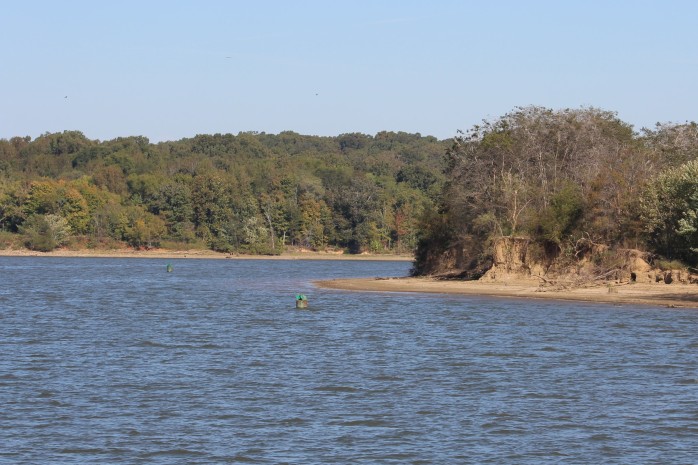
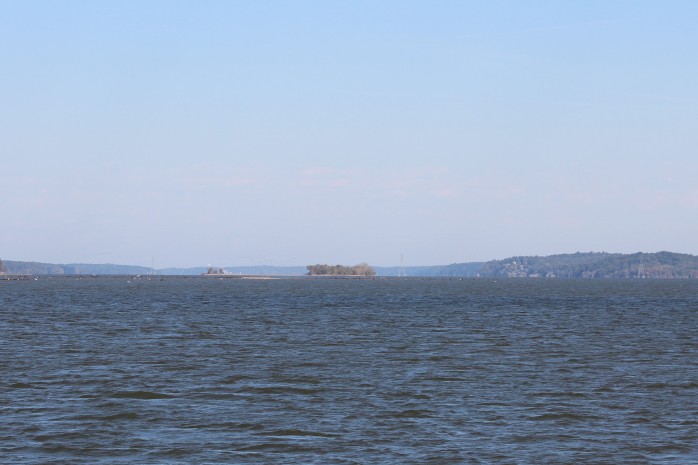



Thursday, October 13, 2016
The crew has buddied up with LyreLynn once again. The two crews had breakfast and then set out for a short cruise to Duncan Bay on Kentucky Lake. As the skipper exited the marina, a large barge was going by so the crew waited for the tow to pass. Unfortunately, the tow was also headed into Kentucky Lake. The crew followed the tow through the canal. I think this could be the longest two miles ever travelled, 32 minutes.

After the crew entered Kentucky Lake, they headed south, up bound on the Tennessee River. Along the right descending bank, there are five large bays off of the lake. The crew anchored in the third one, Duncan Bay.
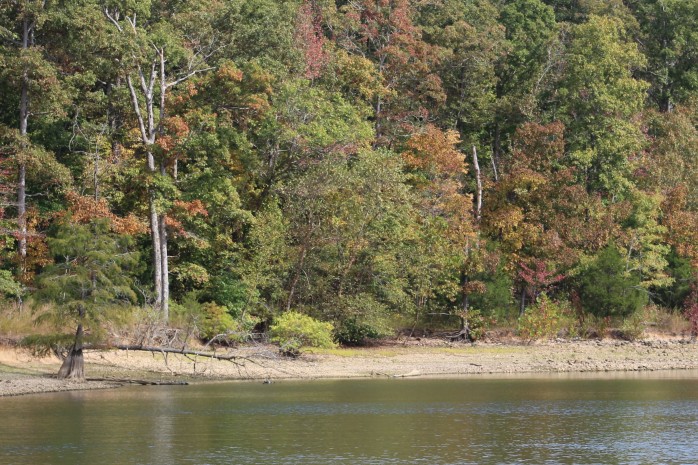
Friday, October 14, 2016
The plan was to weigh anchor at 0800 and head out on a 64 mile cruise. However, the starboard engine decided it would play hard to start. After trying to start the engine, troubleshooting and finding nothing wrong, and failing to start again: the skipper decided to weigh anchor and proceed on the port engine only.
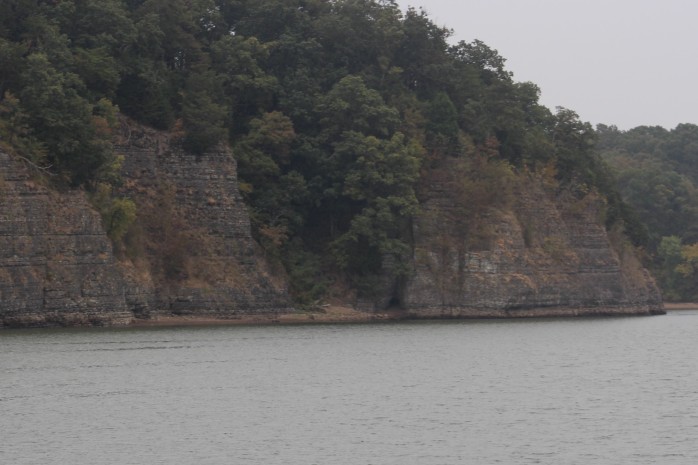
After the anchor was secure and the crew was idling back to the main channel, the skipper reached over and turned the key on and pressed the start button for grins. To his surprise the starboard engine immediately cranked and started. Interesting, interesting indeed.
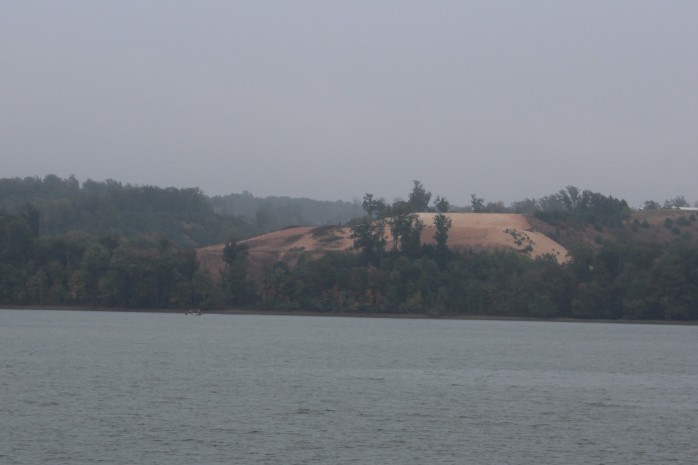
With both engines running the crew made their way up the Tennessee River to the Pebble Isla Marina.

The other issue today would be the rainy weather. It looked as though the storms might pass and the crew would be spared cruising in the rain. However, as the crew continued south they eventually caught the storm. The rain was more of a drizzle and only functioned to make it hard to see. On a brighter note, as the crew was approaching the marina the drizzle stopped and the crew was able to dock without getting wet.

A few interesting highlights on the way south:
– The crew entered Tennessee at about mile 62.6
– There was an old building left abandoned in the river at mile 78. The building was flooded when the Kentucky Dam was built. Authorities tried to remove the building but it was so well built that efforts to destroy it failed. The final solution was to leave it standing.

– The crew passed Pilot Knob just before entering the marina. Early steamboat captains used the knob as a handy landmark while piloting the river. However, the knob also oversaw the only battle in history where a Cavalry defeated a Navy. Yes, you read that right, a Cavalry defeated a Navy. The crew will go visit the State Park and museum tomorrow to get the details. This should be a good story.

Saturday, October 15, 2016
The skipper likes to say that the victors in battle get to write the history. Seems that is what has happened when it comes to Sherman’s famous march across Georgia. Turns out there was a reason he decided to have his army live off the land as they headed to Atlanta, and then on to the Atlantic Ocean. His supply lines and supplies were destroyed on November 4, 1864 in Johnsonville, Tenn.
The Union army had created a large depot in Johnsonville where supplies were shipped down the Ohio, Cumberland, Mississippi and Tennessee Rivers. Then the Union army had built a rail system connected with the existing rails that supplied Nashville.
A Confederate Plan was put into motion to destroy the Depot in Johnsonville. Confederate General, Nathan Bedford Forrest started the action to destroy the supply lines on October 24, 1864. He initially attacked the Union forces further north on the Tennessee River and then disappeared. The Union forces thought that they had defeated General Forrest and went back to business as usual.
Actually, the General was busy placing heavy artillery within 50 yards of Johnsonville. A young officer working for the General noticed that the Union cannons placed above Johnsonville were located such that they would be unable to lower the cannon fire to the low bluffs along the opposite side of the river. He also noticed that the iron clad ships were too low in the water to return fire to the bluffs. After strategically setting 10 cannons along the bluffs, the General opened fire at 1300 on November 4th.

By nightfall, 33 Union ships had been sunk, two trains destroyed, Sherman’s supplies worth 6 million dollars were burned to the ground, and 150 Union troops were captured. Sherman had no choice but to live off the land because all his supplies were literally up in smoke.
Sherman was quoted as saying, “That devil Forrest must be hunted down, even if it costs 10,000 men and bankrupts the Federal Treasury.”
Another fun fact about Forrest, he mustered into the army as a private and ended the war as a Lieutenant General. The only person ever to pull off such a rise in American military history.
Next Week – The crew will continue their journey up the Tennessee River with a goal to reach Chattanooga by the weekend.
Loop On – The water goes on forever and the adventure never ends.
La Salle

Thanks Lynn!!!!!








Mike keeps telling you Army will beat Navy,and here, it’s already happened.
Fascinating story.
LikeLike
I never knew that! So it was a necessity for Sherman. Rather changes the historical narrative for me.
LikeLike
Getting to see some beautiful fall Tennessee colors. That painting is beautiful. Continued safe travels you loopers you!!!! 😉
LikeLike